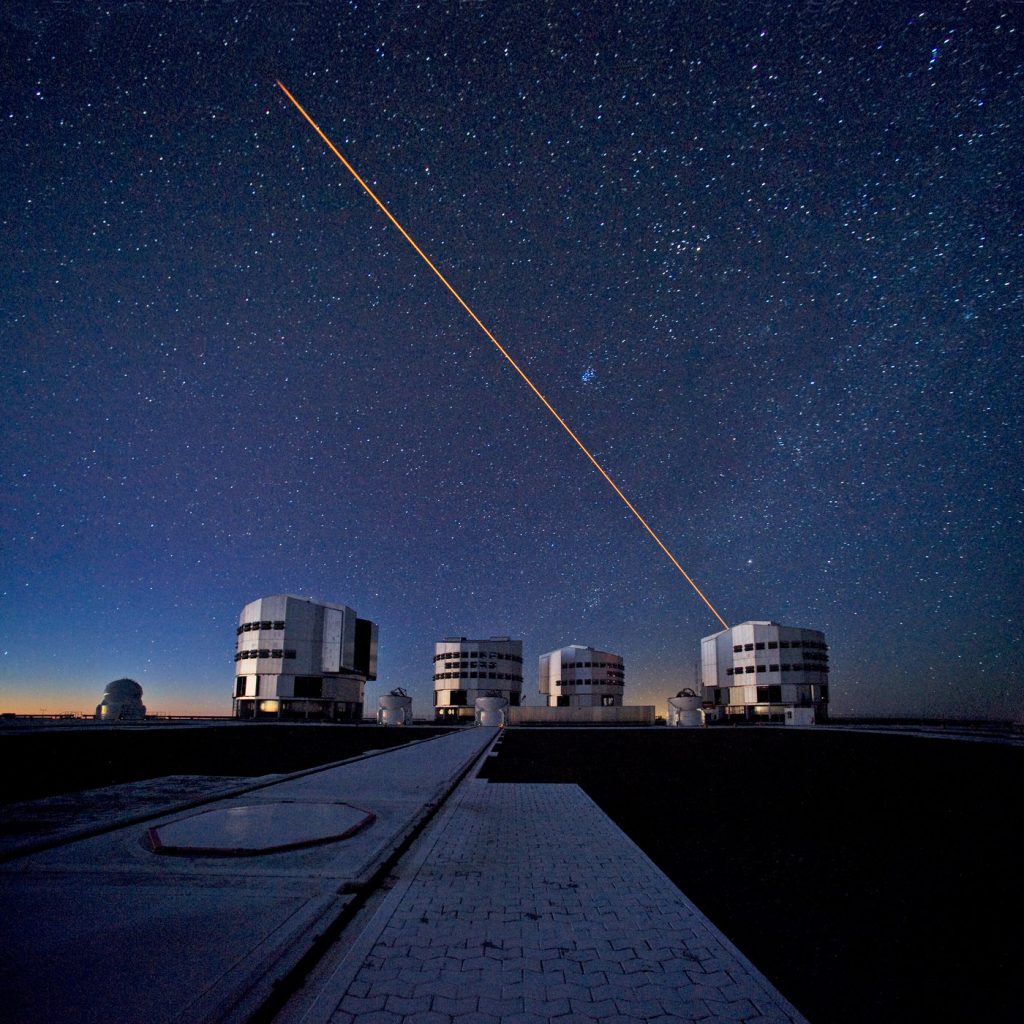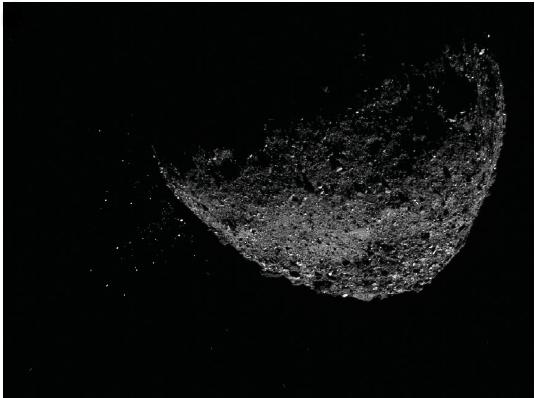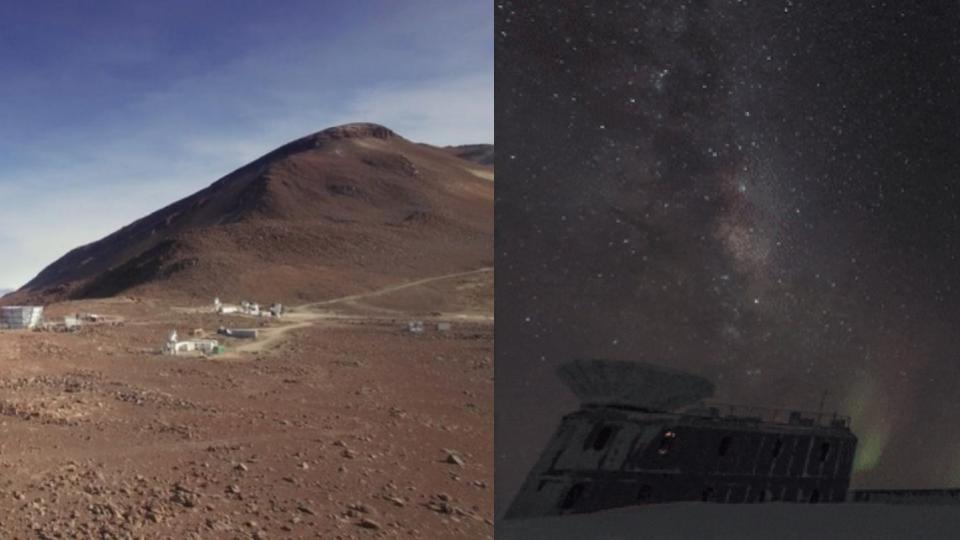Media
Transcript
Over the weekend, I saw one of the most confusing and horrifying weather warning maps I have ever seen. I wasn’t looking at the multiple cyclones and weather depressions in the world’s oceans; I was looking at the state of Colorado, which was experiencing both massive wildfires and greater than 60-degree (Farhenheit) temperature swings associated with snow. These conditions brought risks of both fire tornadoes and snow tornadoes, and in general, were something out of a climate change horror movie.
The thing is that we’re currently living in a climate change horror movie, and reality is often far more horrifying than what your typical movie is capable of coming up with. It also turns out that, unlike in movies, instead of facing climate change with fight and tech and engineering, we’re facing it in pajamas as we struggle against a pandemic.
Well, not everyone is watching quietly, and in the latest issue of the journal Nature Astronomy, researchers from the Max Planck Institute for Astronomy (MPIA) look at the interactions between astronomy and human-caused climate change and point out, “There is no planet B.”

And as we look toward Venus, a world that may have been habitable and supported life as recently as 700 million years ago, we see the results of a runaway greenhouse effect triggered by the massive release of carbon dioxide.
Our world is currently experiencing its own massive release of greenhouse gases, both from the machinery of modern life and also from the melting of tundra and release of various greenhouse gases that had previously been locked in the ice. While it is too late for us to stop the melting of the permafrost, we at least can work to mitigate our own impact.
Astronomers, it turns out, are really bad for the environment.
Across six different articles, researchers look at both how astronomers have a particularly overlarge carbon footprint and are also particularly impacted by atmospheric changes that affect our observations.
On the carbon production side of the coin, the MPIA added up the institute’s 2018 carbon footprint. The dominant carbon source was intercontinental travel to attend conferences and travel to observatories. As someone who, pre-COVID, flew typically 80-100k miles per year, seeing many of the same people at event after event, this finding hit home.
Prior to COVID, advancing a research career required giving talks at conferences that introduced yourself and your work to broad audiences. It required being on task forces that met face-to-face, and it required walking around conferences to hunt out people doing related research to start conversations that led to new collaborations. Without these interactions, people’s work would stagnate, and without name recognition, grants were more likely to go unfunded. We have essentially designed our profession, where being on national and international committees is part of the pathway to university tenure, to require carbon-emitting travel.
Beyond issues with travel, the researchers found that the computational nature of astronomy – which relies on supercomputers for many of our models and calculations – is responsible for disproportionately large electricity consumption.
Putting these pieces together, research and research-related travel was responsible for an average of 18 tons of carbon dioxide released per scientist. For comparison, the average German – again this is research from MPIA – has a footprint of only 9 tons for everything they do for work and home.
With the increased release of greenhouse gases, we’re seeing increases in the temperature of our world. The place to place temperature changes vary, and at Paranal Observatory, home of the Very Large Telescope (VLT), the greatest optical telescope system on our planet, has seen a local temperature increase of 1.5 degrees Celsius over the past three decades. This makes it harder to maintain the telescope enclosures at temperatures that match the nighttime air, and the differences in indoor and outdoor temperatures create turbulence that degrades images.
Further, with increasingly frequent El Nino events, characterized by warmer ocean temperatures in the Pacific Ocean along the equator, they are also seeing humidity changes. Atmospheric water vapor blocks certain wavelengths of light, making it harder for the VLT and other Chilean telescopes to successfully do all the science they are intended to do.
In the grand scheme of the things that are being impacted by climate change, these challenges feel minor. After all, hurricanes are destroying communities and rising waters are consuming cities, such that Indonesia is planning to move one of the world’s largest cities, Jakarta, to a new island.
Still, it may be easier to get astronomers to fly less if as a community we recognize we are part of our own downfall. We have to say, as a community: We need more and better virtual meetings, we need more and better online networking opportunities, we need more and better ways for people to advance their careers without advancing out of their houses.
As we all try to sort how to get through the coronavirus pandemic, this is getting forced on all of us – not just astronomers – and I can only hope that we define new and better ways to be stewards of our planet.
Again, this research is addressed across six articles in the latest issue of Nature Astronomy.
All right, I don’t know about you, but climate change is one of those things that leaves me feeling despair. I can’t offer you much hope for this world, but I can tell you of another world, Bennu, and its compulsion to throw rocks.

Back in January 2019, planetary scientists noticed particles catching the light as they flew away from this orbiting pile of rocks. In image after image, pebbles were seen hopping up and landing elsewhere or flying away altogether. These observed paths allowed some unexpected research to be completed! According to Steve Chelsey: The particles were an unexpected gift for gravity science at Bennu since they allowed us to see tiny variations in the asteroid’s gravity field that we would not have known about otherwise.
The source of these far-flung rocks remains a bit of a mystery. It looks like a combination of thermal fracturing and impacting meteors or one or the other of these effects may be providing the energy to launch pebbles into space. In the case of thermal fracturing, we’re looking at the constant heating and cooling of rocks causing them to actually break, and break with enough force to launch things. With meteorites, this is literally a case of space throwing rocks at Bennu, and those impacts causing Bennu to throw rocks back at space.
As a reminder, on October 20, the OSIRIS-REx mission will be attempting to steal rocks from Bennu, and we will bring that to you live on Twitch.tv/CosmoQuestX.
As a final note, yesterday the Department of Energy (DOE) announced that Berkeley Lab has been selected to lead the construction of a massive network of large and small telescopes that will be placed in Antarctica and in the Chilean high desert for the purpose of observing the Cosmic Microwave Background from the surface of the Earth using more new detectors than are currently in use by the world’s professional astronomy community.

This project is best described as audacious, and because of its scope and potential to both generate amazing science and suck all funding out of the rest of astronomy, we’re going to be following this project from start to finish, which is something we rarely do here at the Daily Space. Here are the fast figures: they will use 21 telescopes at two sites with 500,000 ultrasensitive detectors for at least seven years. The initial announcement didn’t include cost information, and as this project is funded by both the DOE and National Science Foundation (NSF), some digging is going to be required to figure this out. Stay tuned, this story will be getting more attention as details become available.
Learn More
Astronomers Address Impact of Climate Crisis on Astronomy, and of Astronomy on the Climate Crisis
- Max Planck Institute for Astronomy press release
- “An Astronomical Institute’s Perspective on Meeting the Challenges of the Climate Crisis,” K. Jahnke et al., 2020 September 10, Nature Astronomy
- “The Carbon Footprint of Large Astronomy Meetings,” L. Burtscher et al., 2020 September 10, Nature Astronomy
- “The Impact of Climate Change on Astronomical Observations,” F. Cantalloube et al., 2020 September 10, Nature Astronomy
Why Is Asteroid Bennu Ejecting Particles into Space?
- NASA Jet Propulsion Laboratory press release
- Southwest Research Institute press release
- “Meteoroid Impacts as a Source of Bennu’s Particle Ejection Events,” W. F. Bottke et al., 2020 May 18, JGR Planets
Lead Lab Selected for Next-Generation Cosmic Microwave Background Experiment
Credits
Written by Pamela Gay
Hosted by Pamela Gay
Audio and Video Editing by Ally Pelphrey
Content Editing by Beth Johnson
Intro and Outro music by Kevin MacLeod, https://incompetech.com/music/


 We record most shows live, on Twitch. Follow us today to get alerts when we go live.
We record most shows live, on Twitch. Follow us today to get alerts when we go live.